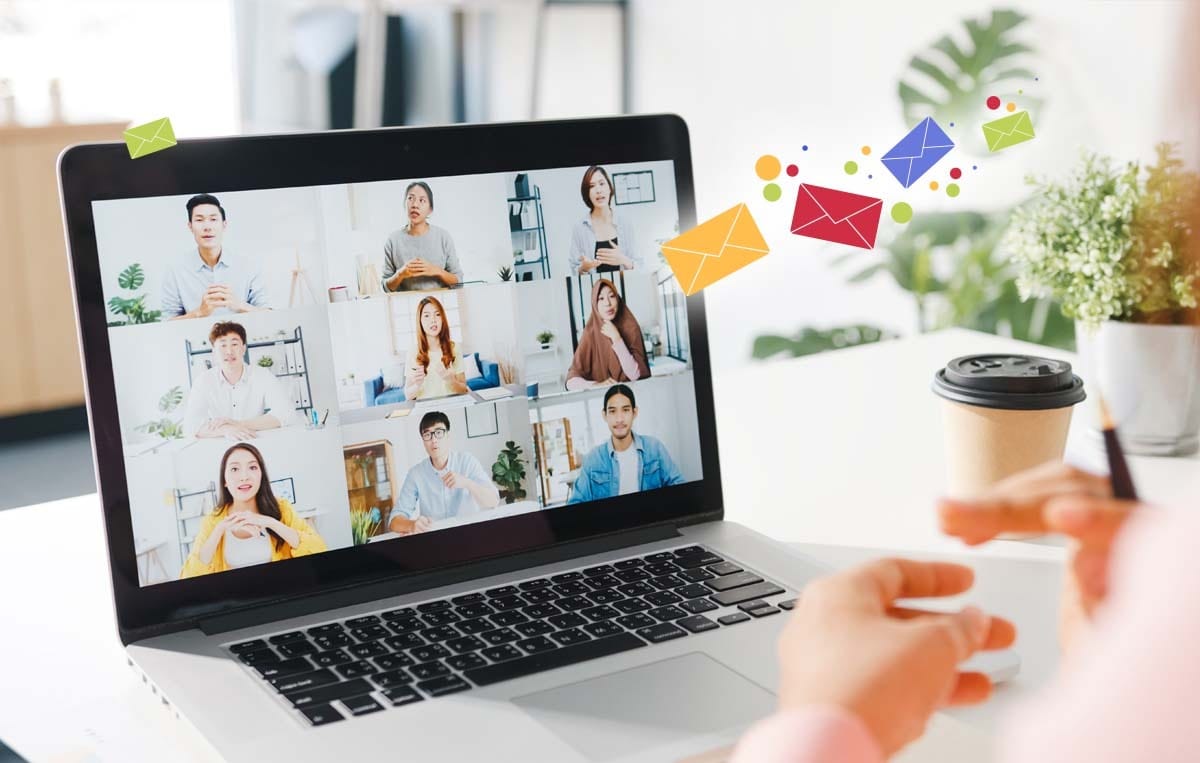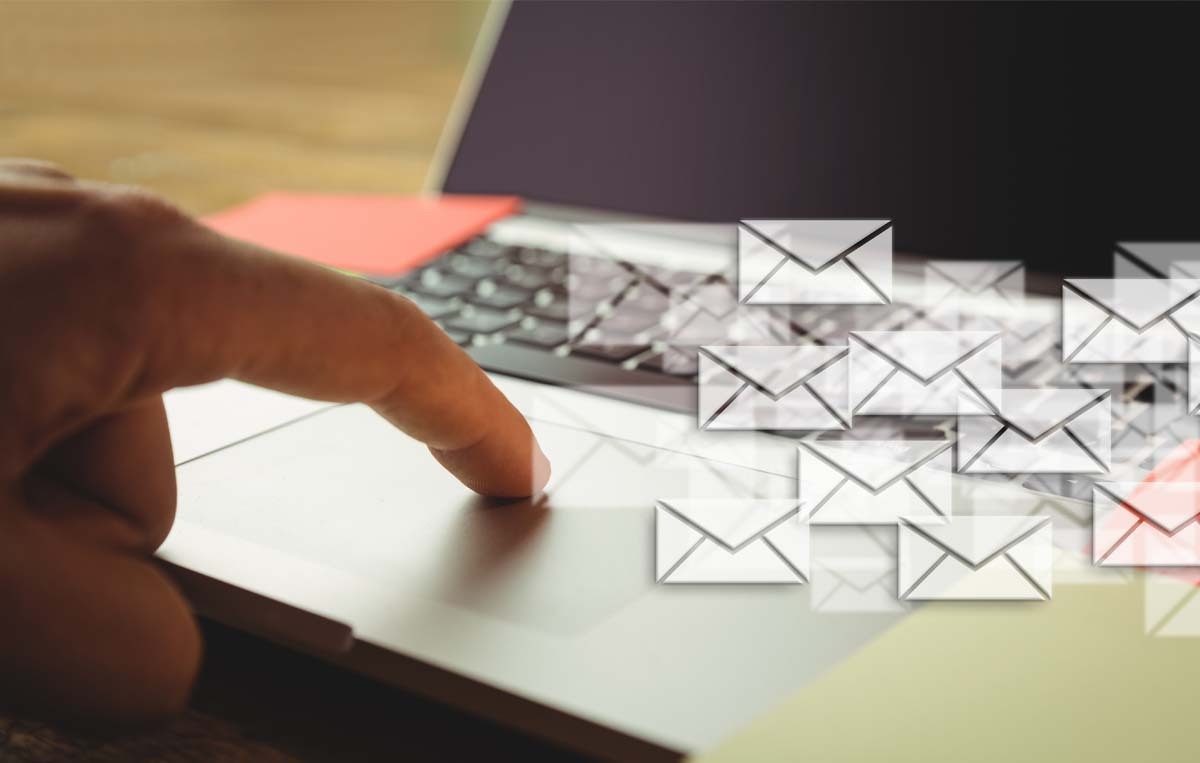Emails remain one of the most effective and contemporary forms of marketing. And nothing should distract you from this channel.
Why?
Because more than 78% of marketers have seen an increase in email engagement over the last 12 months, especially since the pandemic.
This also holds true for virtual events. This blog talks about email marketing best practices, especially for virtual events, so that your email doesn’t go undelivered or unread.
(Bonus: You will also find 3 virtual event email marketing templates that you can use to promote your event.)
Why Email Marketing for Virtual Events?
76% of online event hosts agree that email is the single most effective way to drive event registrations. Most virtual event attendees join an event through emails, and businesses also follow up leads via emails. This makes email an indispensable part of virtual event marketing strategy.
Besides this, the right email marketing strategy will,
- Offer global reach of campaigns: This form of marketing has a larger reach. In fact, even if it can be argued that social media reaches the masses faster, to sign up on a social media platform, you’ll still need a working email id.
- Convey the right message: While marketers often convey that emails can land up as spam or remain unread, emails help convey the right message. The content of the email campaign can state the upcoming events, the keynote speakers, who attended the previous events, and more.
- Serve as a preferred form of communication: An email remains a professional method of receiving information about products, services, and events.
Now that we’ve covered the importance of event email marketing, here are a few hacks to optimize your email marketing strategy for better results.
15 Email Marketing Best Practices that You Should Follow
1. Design Landing Pages that Grab Your Attention
Quick bite: What is a virtual event landing page?
An event landing page encourages users to sign up for upcoming events. Usually different from other web pages, these landing pages come generally with CTAs and have a focused directive, like ‘sign up,’ ‘schedule a demo,’ or even ‘book your seat.’
Begin with an easily navigable landing page that gets the attention of your target audience.
Remember to include deets about your hosts, speakers, event time and date, and some sharing buttons. The landing page will be linked to your email body.
Some examples of successful virtual event landing pages:
SaaStr Annual 2021
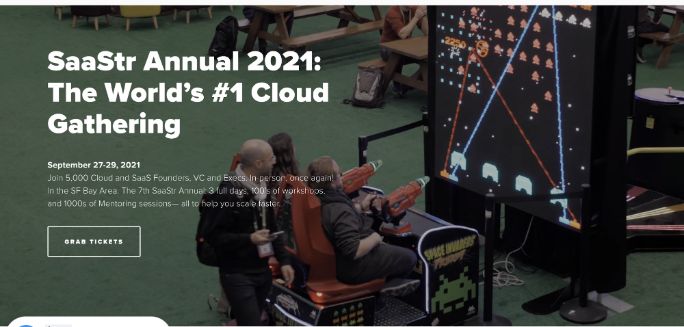
What we love: Clear visuals and video that showcases SaaS leaders and entrepreneurs. The page also comes with clear-cut CTAs, event schedules, featured speakers, and sponsors. It also has a sign-up after every fold to take action.
24 hours of UX
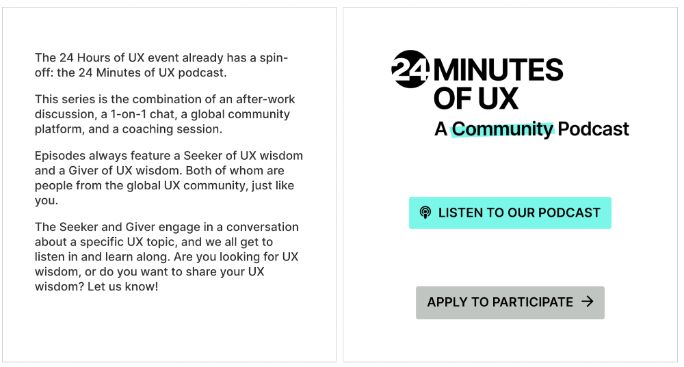
What we love: Bright, bold colors and the use of clear CTAs on the landing page. The landing page also redirects the attendees to upcoming podcasts and recordings.
Quantum Latino
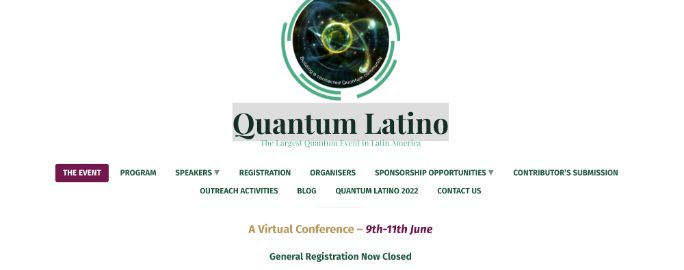
What we love: Minimalistic design with clear CTAs and value props. The event schedule is also listed for easy navigation for Latin America’s biggest virtual conference.
2. Frequency of the Email Campaigns
When should you send that email (especially to a global audience)? How many emails are too many?
If these questions keep you awake at night, here’s the lowdown – your emails should be consistent but not overwhelming or spamming in nature. Just 1-2 emails a week, and you are good.
Pro tip: Your virtual event invitation email should go at least 2 weeks in advance. You can also keep some email newsletters to keep your open rates high.
Remember about triggered emails. These are emails that get sent to your audience as soon as they take action on registrations. Ensure that these emails have the right details, like the ticket, the link to join the event, etc.
3. Focus on the Subject Lines
The most important but the most difficult to crack, subject lines that clearly state the purpose of your email, works best.
Since this is the first thing your audience sees, it will also affect the click rate, so keep your subject lines catchy and innovative.
The ideal length of a subject line should be around 41-50 characters long. Use the preview text (the small section that shows up after the subject line) to add more data.
For virtual events, you can talk about famous speakers, attendees, or even your sponsors. You can even use emojis and personalized content to make the email more relevant.
Some good examples of subject lines for your virtual events:
- Join us for the ultimate job fair of 2021
- You’re invited. Learn more about xxx productivity hacks
- Listen. Connect. Network with legendary marketers
4. Content is Everything
Your email content should be brisk and talk about why anyone should attend the event. But should you give your audience other curated content pieces to read? The answer is YES.
This compelling content helps generate interest in the event and also establishes the significance of the virtual event thereby increasing event registrants.
5. Don’t Forget to A/B test
This is more of a strategy than an email marketing best practice. A/B testing (if done right) can tell you about the open rates, the click-through rates and rework your strategy if needed. Amazing, right?
Here’s the thing, A/B testing helps in understanding how small changes can impact results. Here are a few things that you can learn from your A/B testing campaigns:
- Which day of the week has a better open rate?
- Which subject line works well – one with an incentive or one with a teaser?
- What time of the day an email campaign is run affects the click rate?
- Does your audience click on the gifs/images?
6. Right Tools for Right Results
Here’s the thing, while the market is filled with email marketing tools, you need to find the right fit for your virtual event marketing.
So, here’s a small comparison of sorts of different marketing automation tools based on pricing, integrations available.
Mailchimp
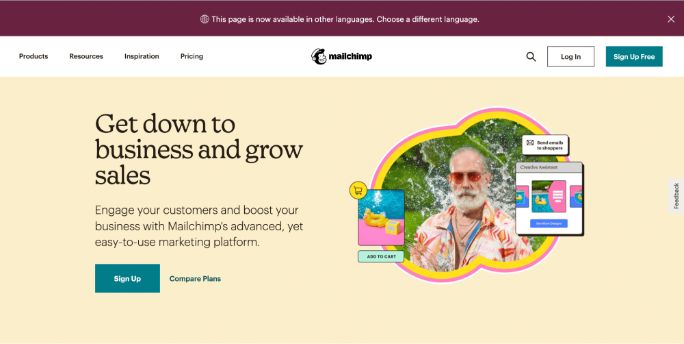
Without being overly complicated to use, Mailchimp comes with a free forever plan for up to 2000 contacts and integrates easily with hundreds of software.
It’s also fairly easy to use and offers hundreds of ready-to-use templates that can be easily used in your campaigns. However, the platform quickly becomes pricey for a larger list of subscribers.
Mailerlite
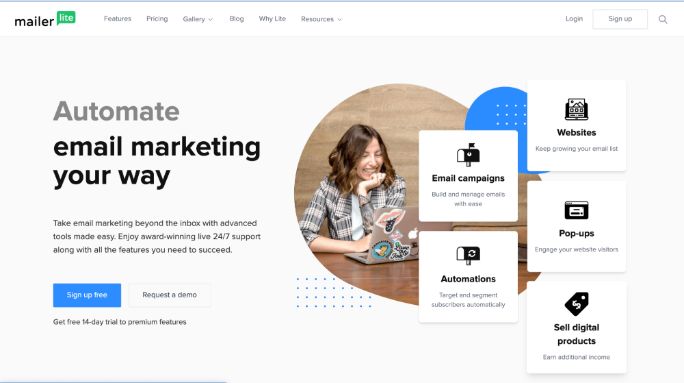
Mailerlite’s drag and drop interface can make it easy to create & design emails. It also comes with a free plan for up to 1000 users and a 24/7 live chat and email support.
The platform comes with 30% off on annual plans, but Mailerlite features lack integrations and often require a lot of information to set up an account.
Hubspot
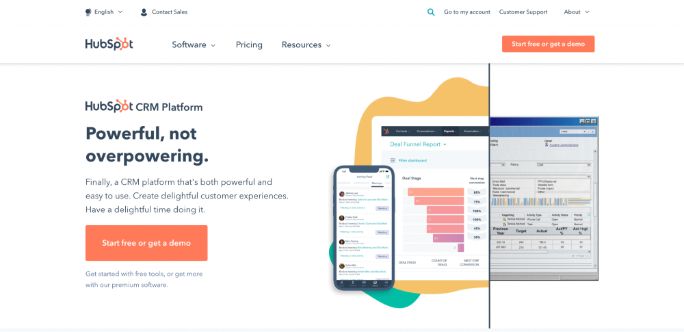
Hubspot is easy to use and is one of the tools that offer the full marketing suite even for an event host – CRM, social media, blogging, etc. It also tracks email delivery rates and comes with helpful articles.
The biggest negative of this tool is that it doesn’t have any free or low-cost plans for small and medium businesses. Also, if you do use any other CRM, it might become difficult to integrate.
ActiveCampaign
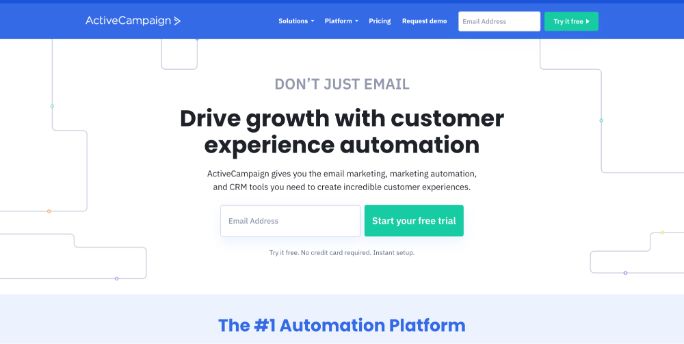
ActiveCampaign comes with hundreds of in-built integrations that help simplify customer interactions. The software comes with a 14-day free trial post which you have to choose from one of their four pricing plans.
Their in-built automation is what gives ActiveCampaign an edge over all other tools mentioned here.
7. Give the best CTAs
Whatever your CTA is in your email – it has to pop! Your subscriber has an 8-second attention span, so the rule of the thumb is you have to leverage well-defined CTAs to get the maximum outcome from your email.
Things that you can do:
- Create unique CTAs
- Opt for buttons rather than hyperlinks
- Make it a noticeable color (and bigger)
- Keep CTA text short
- Use action verbs so that your audience doesn’t miss it
8. Leverage Gated Content
Humans are born curious, and it’s time to feed their curiosity with content that will help them make their decision. Gated content helps to achieve that.
Here are some types of gated event content that you can use in your email marketing strategy:
- Case studies to make people aware about how you helped businesses achieve their objectives
- Ebooks especially from your keynote speakers, can create curiosity around their expertise and drive conversions
- Market research reports that your target audience can use
9. Polls and Surveys that Your Audience Loves
If you want to get quick insights from your audience, as in what clicked and what did not, a poll and survey often work! But ensure to ask the right evaluation questions and DO NOT make it more than 2 minutes.
This will give you an idea of what your audience loved, what your audience hated, and what can be improved before hosting another virtual event. Keep a record and make adjustments.
Here are some questions that you can ask your audience in a post-event survey email:
- How likely are you to recommend the virtual event to a friend or colleague?
- How did you hear about the event?
- What made you choose this event?
- How satisfied are you with the speaker session?
- How satisfied are you with the quality of the session?
- What was your least favorite part of the event?
- What was your most memorable part of the event?
- Any other comments or suggestions for us to improve.
Feel free to use these or tweak them according to your requirements.
10. Templatizing to Succeed Faster
If you know that your email marketing strategy works, it’s often a good idea to templatize it and use it for your next virtual event.
One of the best things about an email marketing strategy template is that you can create templates and replicate them for reals. (We are going to give you some samples below) This will save time and effort. (Who doesn’t love that!)
11. Making it Mobile-friendly
Nearly 1.7 billion users check emails on their mobile phones, for desktop, which is around 0.9 billion users. This number itself is enough to tell you that all emails need to be mobile-friendly. To make the emails mobile responsive, ensure the following:
- Be concise in design and content
- Use single-column templates
- Avoid tiny fonts; no one likes to zoom in on your mobile devices
- Find out which operating systems your subscribers are using
- Recheck the time you send the emails
- Definitely run tests to check if the email is working properly
- Optimize the images used for the mobile
Try and get your customer feedback on these emails and optimize again if needed.
Take your social proof to a whole new level by including it in your email body. Include smiling faces, and that helps to build trust and increase your email conversion rate.
Establish an immediate emotional connection with your subscriber by using your speakers to break down complex terms for your target audience to understand.
13. Use Images/gifs to Drive Conversations
Nobody wants to read 100% of text emails cause they are often boring or bombarded with too much information all at once. Let the image do the talking for you, instead. Use minimal text to echo your message.
In this post-Covid world, where everyone seeks human connections, even if virtually, it’s always a nice touch to add the images of your keynote speaker, especially in your invitation/agenda emails.
14. Keep a Close Eye on the Analytics
As soon as your first email campaign for the event sets out, it’s time to measure the good, the bad, and the ugly. Overperformance or underperformance of any metric can lead to undesirable results, so keeping a close eye on the numbers will help to optimize your marketing strategy.
Here is a list of metrics that you should keep an eye on:
The open rate of the emails tests your list as well as your subject line. While the industry standard may vary according to the type of event, it is important to keep checking. If your open rate is not satisfactory, it can mean the following:
- Your time and day are not working for your audience. For example, maybe you have scheduled your email for a Tuesday, mid-day when your audience is working, so they might have missed your email completely.
- Your subject line and preview text are not catchy enough or are too spammy for your audience. Go ahead and tweak both and try sending the emails. (Sometimes, just by making it more-FOMO works.)
- Your contact list size and segmentation are not done correctly. Remove the email subscribers who have not engaged with your brand in the past 6-12 months. This might make your subscriber base small, but it will essentially send emails to an audience that is genuinely interested in your brand.
The click-through rate of the emails will help determine whether the copy of the email is clicking with your audience. Feel free to zhoosh it up a bit and personalize it according to your segmentation to add value.
15. Show Your Gratitude with Thank You Emails
Once your event registrations start rolling in, ensure that you have set up ‘thank you emails’ as part of your trigger campaigns. These emails can be simple, with probably a gif, to express your gratitude and show how happy you are.
Now that we have the email marketing best practices strategy in place, it is time to explore some ready-made templates that will up your email campaigns.
3 Email Marketing Templates for Virtual Events
1. ‘Save the date’
What is it?
This is similar to an announcement email.
Subject line: We’d love to see you among us on [insert date and time]
Hi [contact name],
Join us on [date, and time] to learn about [insert value prop]!
Register today
Logistics:
The [event type, webinar/virtual event] will be held on [date, time].
If you do register today, we’ll send you a recording and downloadables for free after the event.
Save your seat today.
Cheers,
The [insert_name] team
Who to send?
Anyone who has attended your past events as well as your subscriber list, patrons.
When to send?
At least 2 weeks prior to the virtual event.
What is it?
To maximize registrations, it’s always a good idea to send across 2 invitation emails.
Subject line: It’s not too late! Registrations still open for [event name]
Hi [contact name],
There’s no time to lose. Click the ‘Register’ link below and save your seat for [event name] on [date, time].
Plus – You’ll also be getting [insert value prop, like never heard about keynote speakers] and more!
Moreover, don’t miss out on networking with,
- [speaker 1]
- [speaker 2]
- [speaker 3]
RSVP now
The [insert_name] team
Who to send?
This email should go out to all those who have received your first email and are still not registered for the event.
When to send?
Ideally, you can use this template 1 week before the event date.
3. Thank You
What is it?
Once the event is over, it’s time to reconnect with your audience one more time. This email is specifically for all those who registered and attended the event. It acts as a touchpoint for you to continue your conversation even after the event.
Subject line: Thank you for attending [event name]|Watch this recording
Hi [contact name],
Thank you so much for attending the event. We hope you enjoyed the conversations between [keynote speaker 1] and [keynote speaker 2].
We’d love to know your two cents on the same. Would you like to participate in a survey?
[Insert survey CTA – make it a button]
Here are the additional materials we promised we’ll deliver post the event,
- Event recording
- Downloadable material + plus value prop
- Extra materials (to keep the audience interested for your next event)
Cheers,
The [insert_name] team
Who to send?
This email should go out to all those who have attended the event.
When to send?
Ideally, you can use this template up to 1 week after the event has ended.
Summing it Up
Every event comes with different forms of promotion. What you need to know is what your end objective from hosting the event is. This should drive some sense in your email marketing campaign as it can actually make or break your event.
Just remember to bring in a kickass automation tool, weigh in your audience requirements, sprinkle some personalization and add in relevant content that makes a person click!
And while you’re busy prepping up your emails, don’t forget to promote your webinar or virtual event on social media. The idea is to drive more registrations for the event.
Pre-schedule your posts with the help of SocialPilot. To know what more it can do, take our free trial today.
